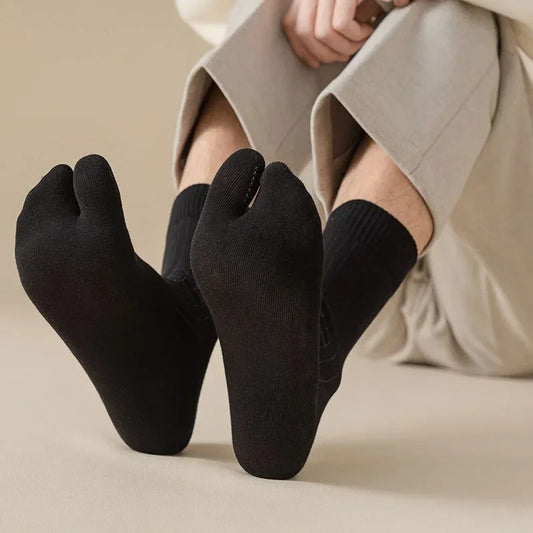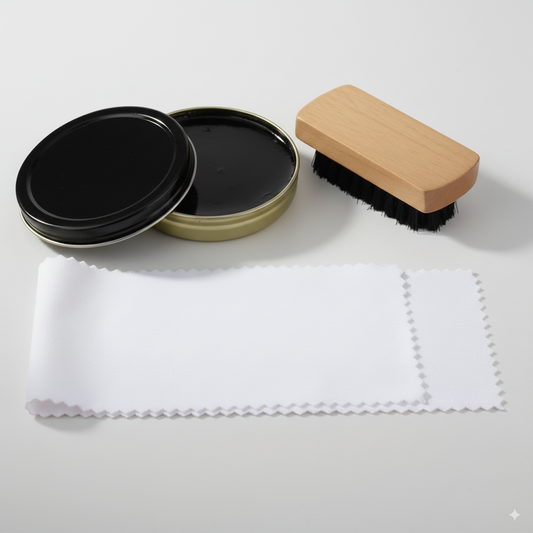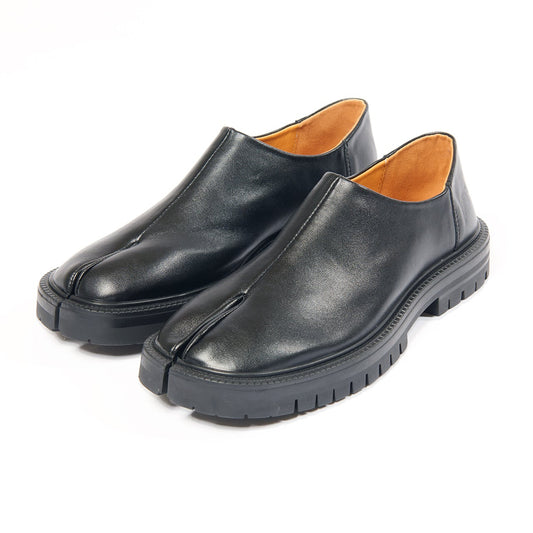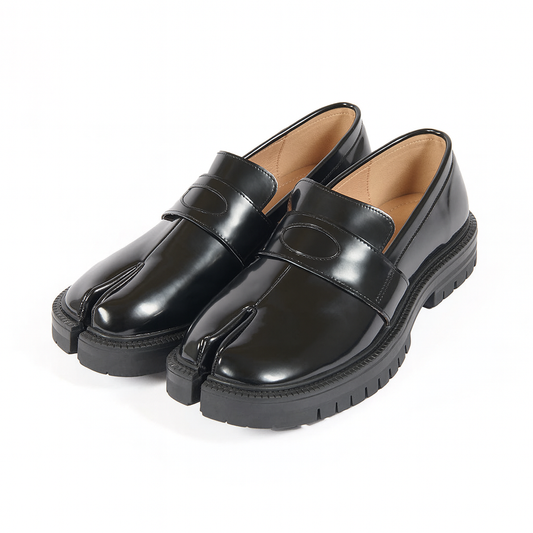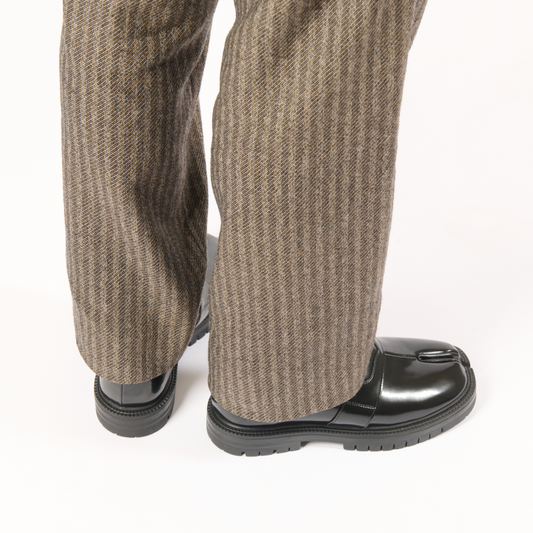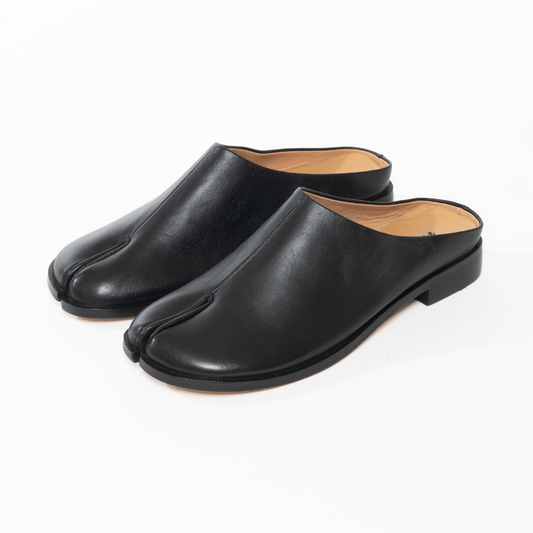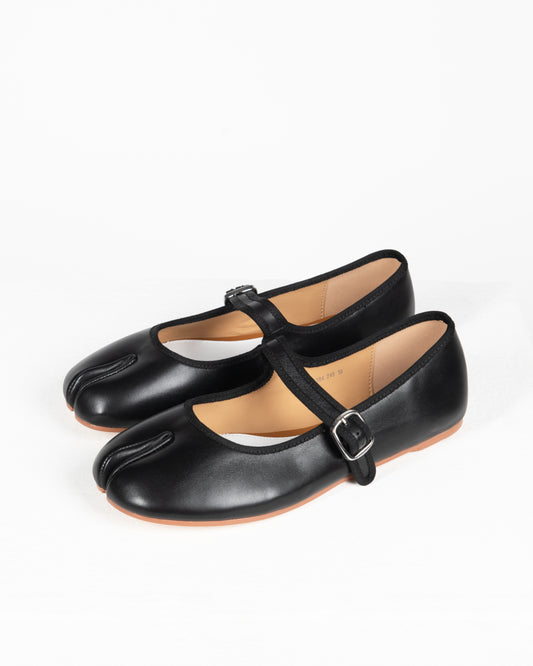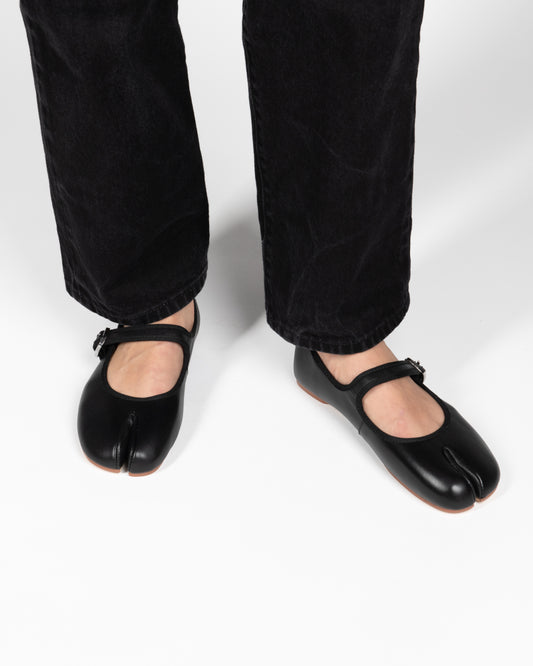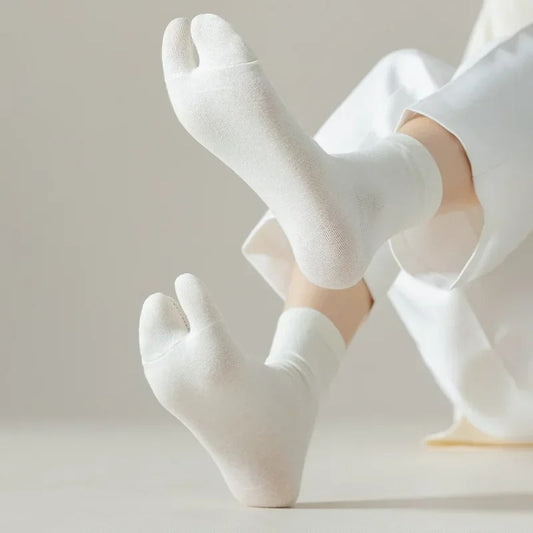How to Wear Tabi Shoes
Often seen as bold or even puzzling, Tabi shoes intrigue as much as they attract. With their distinctive shape—a clean separation between the big toe and the rest—they never go unnoticed. But these iconic shoes from Japan aren’t just a designer eccentricity. When styled right, they can become a true fashion signature in your wardrobe.
What Are Tabi Shoes?
Tabi shoes originate from Japan, where the term originally referred to split-toe socks worn with traditional sandals like zōri or geta. In the early 20th century, they evolved into jika-tabi: reinforced versions with rubber soles, worn by workers for comfort and mobility.
Today, Tabi are making a strong comeback in contemporary fashion—thanks in part to designers like Maison Margiela, who turned them into a full-fledged fashion icon. Now available as boots, sandals, sneakers or even loafers, Tabi offer a visually bold alternative to classic footwear.
💡 Good to know: The word tabi originally means “sock” in Japanese. Today, it’s used to refer both to the traditional split-toe socks and the modern footwear inspired by them.
How to Wear Tabi Based on Your Style
One of Tabi’s greatest strengths is their versatility. Far from being exclusive to avant-garde fashion lovers, they can be either subtle or extravagant depending on their shape, material, and how you style them.
In a minimalist look, they add an unexpected twist: black Tabi ankle boots paired with raw denim and a white shirt is all you need. For a more graphic or arty style, go for metallic or printed models to make a statement. In a utilitarian or workwear context, canvas or suede Tabi echo their functional origins while fitting into a modern wardrobe.
Wearing Tabi in Spring/Summer
In spring and summer, Tabi take on a lighter, more breathable form. Canvas, cotton, or soft leather replace heavy winter boots. Sandal versions are perfect for sunny days.
Paired with flowy pieces like long dresses, midi skirts or linen trousers, Tabi are both stylish and comfortable. They bring a unique edge without sacrificing ease.
For everyday looks, try beige or white Tabi with high-waisted wide-leg trousers and a fitted tank top. For evenings, metallic or patent leather Tabi elevate a black slip dress or a monochrome outfit. While on vacation, Tabi sandals make for a statement piece without the bulk of classic shoes.
Wearing Tabi in Autumn/Winter
In cooler seasons, Tabi become more structured. Swap lighter models for sturdier leather boots, sometimes lined for warmth. The split-toe design remains, but the material changes the mood: soft black or burgundy leather adds sophistication, while camel suede or pebbled leather creates a more casual vibe.
With colder weather, Tabi pair perfectly with long, cozy pieces: belted coats, wool trenches, wide trousers or thick midi skirts. It’s also the perfect season to play with layering—textured or visible socks (ribbed, knit, or colored) can accentuate the iconic split toe.
For colors, fall/winter leans into deeper, muted tones: black, chocolate brown, taupe, olive green, navy. These blend seamlessly into seasonal palettes or stand out subtly in more neutral outfits.
Worn with cropped or rolled-up trousers, Tabi boots become the centerpiece—functional, graphic, and daring.
Which Tabi to Choose for Each Occasion?
Wearing Tabi at Work
Wearing Tabi to the office may seem bold, but it’s totally doable with a clean, understated model integrated into a polished outfit. Ideal choice: black leather ankle boots—smooth or pebbled—without metallic finishes or flashy details.
Pair them with straight-leg tailored pants, raw dark jeans, or a midi skirt. Stick to sharp cuts and elegant fabrics (like wool, structured cotton, or silk) to balance the graphic effect of the split toe.
💡 Tip: In formal settings, Tabi blend better when the rest of the outfit remains classic. Think “discreet twist” rather than “radical shift.”
Wearing Tabi for Going Out or Traveling
Tabi are great for outings where you want to express personal style. At night, choose patent leather, silver, or metallic versions—they can instantly elevate a simple outfit. Paired with a fluid black dress or monochrome ensemble, they become the star of the show.
While traveling, flat or low-heeled Tabi are ideal: easy to slip on, lightweight, and comfy, they let you walk all day while staying stylish. As sneakers or summer sandals, they pair effortlessly with a compact capsule wardrobe and add that special edge to any look.
Everyday Tabi: Comfort with a Twist
Tabi can totally replace your everyday boots or sneakers. Choose a neutral model (off-white, beige, camel leather, or black) in a soft material to prevent rubbing, and wear them like any closed-toe shoe.
Comfort is often underestimated: the toe separation may feel strange at first, but it provides better stability. Some models even come with ergonomic soles for extra support.

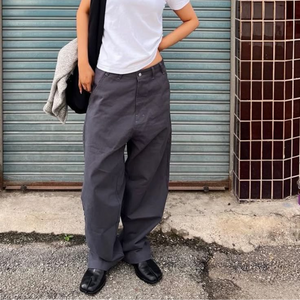
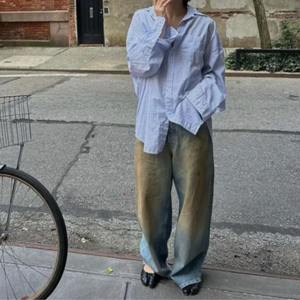
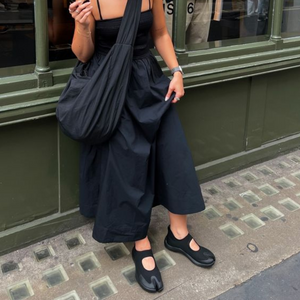
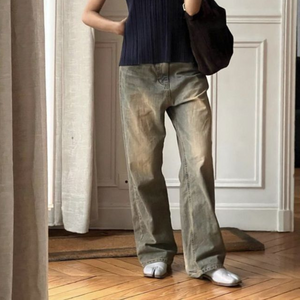




















With Jeans or Wide-Leg Trousers
Pairing Tabi with jeans is an easy way to incorporate them into everyday looks. Go for straight or flared cuts that reveal the split toe without hiding it. Wide pleated or linen pants also work well for a soft, structured look.
A raw denim + blazer + black Tabi combo = sharp, minimalist, and wearable.
With Long Dresses or Midi Skirts
Tabi go beautifully with feminine silhouettes. Flowy dresses, pleated skirts or straight cuts allow you to play with the contrast between structure and softness.
To avoid a “costume” effect, stick to neutral or tonal colors, and choose well-crafted Tabi in leather or quality canvas.
With or Without Socks?
One of the big questions with Tabi.
You emphasize the graphic element. Play with texture (ribbed knit, silk, lurex) and color contrasts. The look is sharper and more architectural—best for summer or highly-designed models.
If you go with socks, make sure they’re split-toe compatible. Some brands offer socks specifically made for Tabi.
How to Choose the Right Tabi: Materials, Colors & Fit
Available Materials
The material impacts the style, comfort, and durability of your Tabi. Each texture brings a different vibe and suits specific uses:
- Smooth leather: Chic and timeless—great for formal or minimalist looks
- Suede: Soft and textured—ideal for casual or fall aesthetics
- Canvas: Light and breathable—perfect for summer and casual models
- Patent leather or vinyl: High-shine mirror effects for bold fashion-forward statements
💡 Tip: Avoid low-quality faux leather. The split-toe design can feel uncomfortable with stiff or poorly finished materials.
Looking for Tabi that fit your style? Here are a few suggestions:
- Soft black leather Tabi for work
- Ecru canvas Tabi sandals for summer
- Camel suede ankle boots for fall
- Metallic or silver Tabi for a bold fashion twist
💬 Insert product links or visuals here if you have an e-shop or affiliate selection. Suggested format: clickable tiles, slider, or list.
Muted or Bold Colors?
Color dramatically shapes how your Tabi are perceived. Subtle tones like black, beige, cream, or grey blend easily into existing wardrobes while remaining discreet. Great if you're just starting with this shoe style.
Bolder shades—deep red, electric blue, silver, gold, or even prints—turn Tabi into a centerpiece. These models require more confidence but can become stunning focal points in well-composed outfits.
If it’s your first pair, stick with a neutral color for versatility. Once you’re comfortable with the shape, go ahead and experiment.
Finding the Right Size
Tabi shoes often run snug, especially in rigid leather versions. If you're between sizes, it’s usually best to size up—especially if you'll be wearing split-toe socks.
If possible, try them on with the socks you'll actually wear, as sock thickness can affect fit. Some brands offer size guides tailored to their specific styles—check them to avoid surprises.
Note that some leathers soften over time, but that doesn’t replace a good first fit. Prioritize comfort—especially with such a unique design.
How to Care for Your Tabi Shoes
Like any good shoes, Tabi need a little care to stay beautiful and comfortable over time:
- Smooth or patent leather: Wipe clean with a damp cloth, nourish with leather conditioner
- Suede: Brush dry to remove dust, apply waterproofing spray
- Canvas: Avoid the washing machine—handwash gently with neutral soap
Store your Tabi with shoe trees if possible to avoid creasing, especially around the split toe. And if your soles are particularly unique (especially Japanese-made ones), don’t hesitate to consult a cobbler familiar with these styles.
